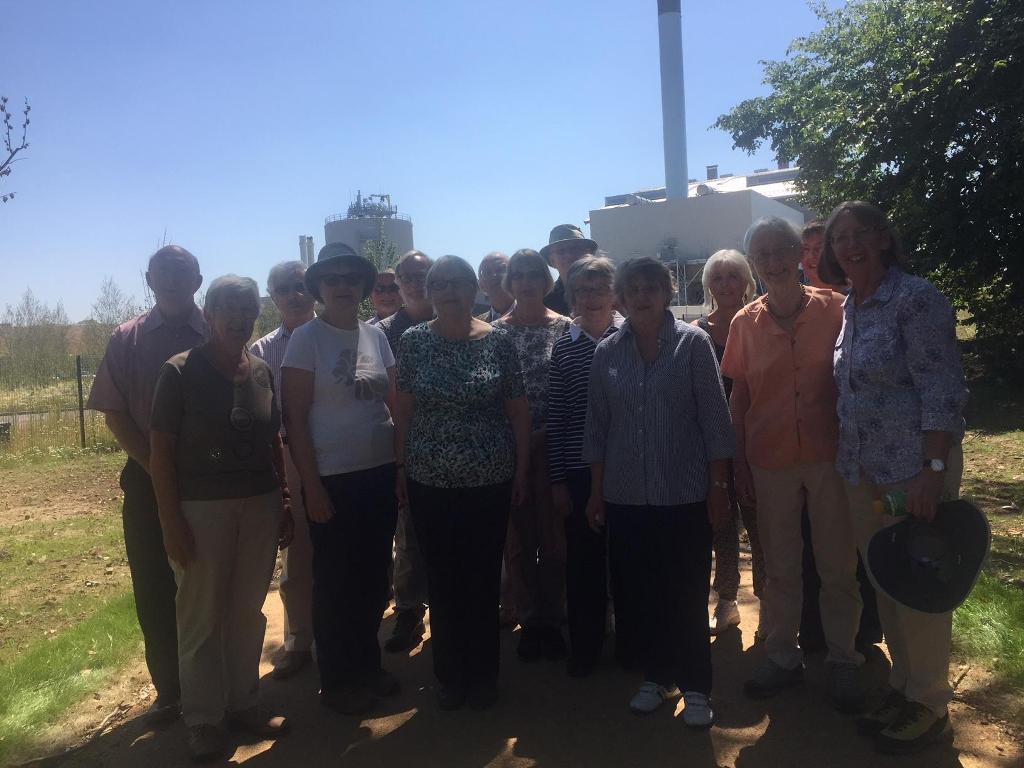
UK households bin more than 27 million tons of rubbish each year and we are running out of space in our landfill sites. Since spring 2018, waste from homes in North Yorkshire and the city of York is not dumped, untreated, in a hole in the ground but is processed at a brand new waste recovery centre.
Many local residents, including some members of Harrogate NWR, were concerned at the thought of an industrial waste processing plant near their homes. Contractors Amey, no doubt conscious of the need to win over local sceptics, have built a visitor centre on site and welcome adult groups and school parties. We decided to visit Allerton Waste Recovery Centre and see it for ourselves.
The top half of the shiny new building is easily visible, sitting amongst the fields beside the A1 road, but as it is built inside a disused quarry much of the site is hidden. The grounds have been landscaped and the, now obsolete, landfill site that was already there has been grassed over. First impressions on arrival were that the plant was surprisingly quiet and it didn’t smell. We learnt later that the building is kept under negative pressure to stop any odours escaping.
Debbie, our guide greeted us at the visitor centre and after coffee we took our seats for her presentation, explaining the workings of plant. The facility is not a recycling centre, it handles what’s left after householders have removed the recyclables. Bin lorries from the local area empty their load directly into the plant, waste from the more distant parts of the county is brought to site in large, sealed, containers. The waste is then sorted, the first material to be removed is food waste and other organic material. This is fed into an anaerobic digester where a colony of micro-organisms feed on the waste, excreting methane gas which is used to generate electricity for use on site.
Although householders should have removed recyclable materials before putting their waste in the bin, some gets through. A combination of magnets, eddy currents, light beams and jets of air are used to recover the recyclables. Then, just to make sure that nothing useful is left in the waste there is a final check by human operators. In case we had concluded that we could forget about recycling and go back to chucking all our waste in together, Debbie emphasised that the metals, glass and paper recovered this way are dirty, broken up and less useful and valuable than the nice clean material from our recycling bins.
Once all the useful materials have been recovered from the waste, the rest is burnt at extremely high temperatures, in the “energy from waste” plant, generating enough electricity to power 40,000 homes.
After Debbie’s presentation it was time to visit the plant itself. We had been instructed to wear long trousers and sensible shoes to which we now added bright yellow hi vis waistcoats.
When we got inside the processing plant it was a little smelly, but less so than a bin lorry on a hot day. It was also very quiet as the sorting equipment was not in operation; a householder had chucked something into their bin which had jammed up one of the trommel drums which are used to screen the waste at the beginning of the processing. None the less the equipment was still impressive to see.
We invited friends and partners to join our visit which proved so popular that a second visit is planned for those who couldn’t attend the first time. There are several similar sites around the country, maybe your group would enjoy a visit to your local one.
Sue Howes
Harrogate NWR
